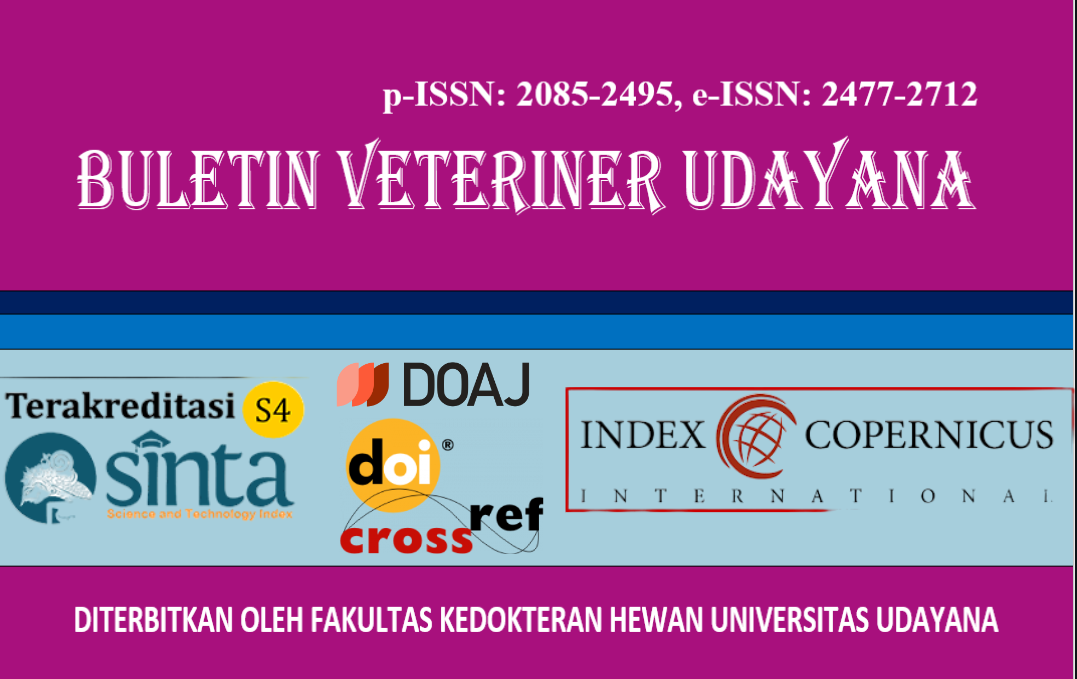COMPLICATIONS OF CANINE PARVOVIRUS INFECTION WITH STREPTOCOCCUS CANIS IN A FREE-ROAMING MIXED BREED DOG: A CASE STUDY WITH ANATOMICAL PATHOLOGY AND HISTOPATHOLOGICAL
DOI:
https://doi.org/10.24843/bulvet.2025.v17.i04.p04Keywords:
Canine parvovirus, streptococcus sp, PCR, Histopathology, anatomical pathologyAbstract
Canine Parvovirus (CPV) is a highly contagious infectious agent in dogs, with high morbidity and significant mortality rates, especially in unvaccinated animals. This study reports a case of CPV infection exacerbated by secondary bacterial pneumonia caused by Streptococcus sp. in a 10-month-old male mixed-breed dog in Denpasar, Bali. The dog exhibited clinical symptoms for four days, including bloody diarrhea, dehydration, anorexia, coughing, dyspnea, vomiting, and nasal discharge, before succumbing on the fifth day. Diagnosis was conducted through histopathological examination, Polymerase Chain Reaction (PCR), and bacterial culture. PCR results confirmed the presence of CPV with a 900 bp fragment, while bacteriological analysis identified Streptococcus sp. in lung tissue with hemolytic activity. Macroscopic analysis revealed hemorrhagic pneumonia, edematous myocarditis, and hemorrhagic enteritis, while histopathology showed inflammatory cell infiltration and tissue necrosis. Streptococcus infection worsened the dog's condition by causing severe lung inflammation, impairing respiratory function, and increasing the risk of death. The combination of CPV and secondary infection highlights the importance of vaccination in preventing CPV and the need for early detection through PCR and bacterial culture to improve prognosis and treatment effectiveness. This study emphasizes that rapid diagnosis and appropriate supportive therapy can help reduce disease severity and lower mortality rates in infected dogs.




